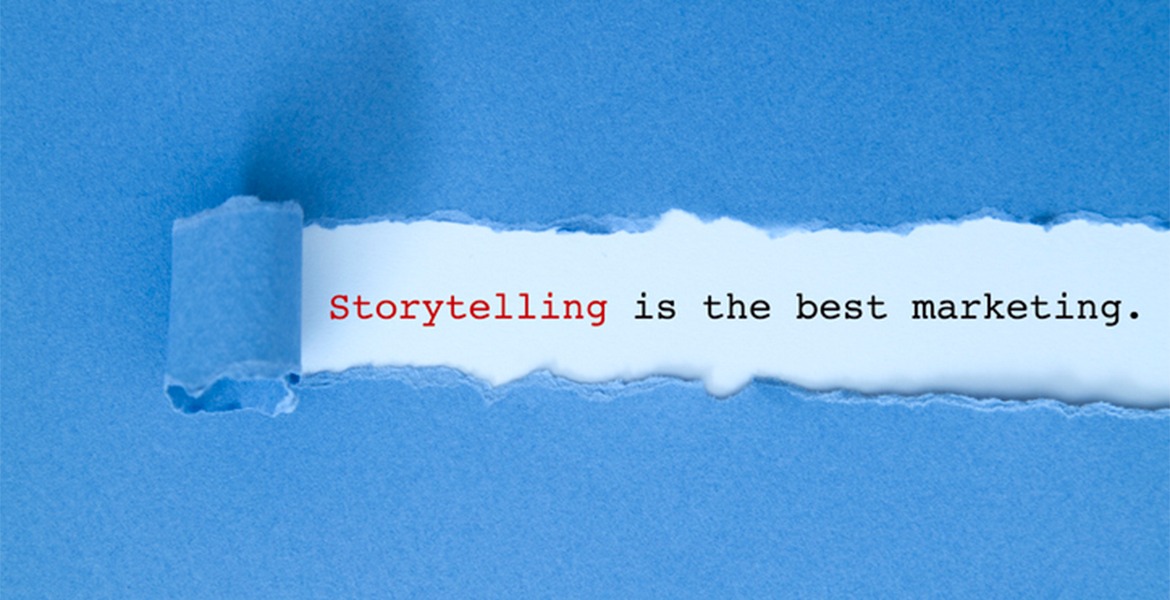The Power of Story-Telling in Marketing and Branding
In the realm of strategic brand management, one of the most potent tools at a marketer's disposal is the art of storytelling. Far beyond mere advertising, effective storytelling weaves a narrative that not only captures attention but also resonates with the audience on a deeper level. In today's highly competitive market landscape, where consumers are bombarded with endless choices and messages, brands must differentiate themselves not just through products or services but through the stories they tell.

Understanding the Essence of Brand Marketing Strategy
At its core, brand marketing strategy aims to create a unique identity for a brand and cultivate a strong connection with consumers. While traditional marketing tactics focus on product features or benefits, strategic brand management goes beyond that by establishing an emotional connection. This emotional resonance is where storytelling comes into play. By crafting narratives that evoke feelings, experiences, and aspirations, brands can tap into the fundamental human desire for connection and belonging.
The Art of Storytelling in Marketing
Storytelling in marketing involves crafting narratives that communicate the brand's values, mission, and personality. These stories can take various forms, from anecdotes and testimonials to immersive multimedia experiences. The key is to create compelling narratives that captivate the audience and leave a lasting impression. Let's delve into some examples to illustrate the impact of storytelling in marketing:
Nike's "Just Do It" Campaign:
Nike's iconic slogan is more than just a catchy tagline; it's a rallying cry that inspires people to push beyond their limits. Through powerful storytelling in its advertisements featuring athletes overcoming challenges, Nike has successfully positioned itself as a brand synonymous with determination, resilience, and victory.
Apple's "Think Different" Campaign:
Apple's marketing strategy revolves around storytelling that celebrates creativity, innovation, and individuality. Apple invites consumers to join a community of dreamers and doers who dare to think differently by showcasing visionaries like Albert Einstein, Martin Luther King Jr., and Steve Jobs himself.
Dove's "Real Beauty" Campaign:
Dove's campaign challenges conventional beauty standards by celebrating diversity and authenticity. Through storytelling that highlights real women with different body types, ages, and ethnicities, Dove has fostered a powerful emotional connection with its audience, promoting self-acceptance and inclusivity.
Tata Tea's "Jaago Re" Campaign:
Tata Tea's "Jaago Re" campaign in India is a stellar example of storytelling in marketing with a social message. Through a series of thought-provoking advertisements, Tata Tea encourages citizens to wake up and take action on pressing social issues, such as corruption, gender inequality, and environmental conservation. By leveraging storytelling to ignite social change, Tata Tea has not only strengthened its brand identity but also inspired positive action within society.
.Crafting a Compelling Storytelling Marketing Strategy
Effective storytelling in marketing requires careful planning and execution. Here are some key elements to consider when crafting a storytelling marketing strategy:
Know Your Audience:
Understanding your target audience is essential for crafting stories that resonate with their values and aspirations. Conduct thorough market research to gain insights into their demographics, preferences, and behaviour patterns.
Define Your Brand Narrative:
Clarify your brand's story by identifying its core values, mission, and unique selling propositions. Your brand narrative should be authentic, compelling, and consistent across all communication channels.
Choose the Right Channels:
Select the appropriate channels and formats to deliver your brand's story effectively. Whether it's through social media, video content, or immersive experiences, choose platforms that align with your target audience's preferences and habits.
Create Engaging Content:
Develop content that captivates and resonates with your audience. Use storytelling techniques, visuals, and emotional appeals to create immersive experiences that leave a lasting impression.
Measure and Iterate:
Track the performance of your storytelling marketing efforts using key metrics such as engagement, brand sentiment, and conversion rates. Use this data to refine your strategy and optimise future campaigns.
The Impact of Storytelling on Branding
Branding through storytelling goes beyond marketing; it's about shaping perceptions, building trust, and fostering loyalty over time. By consistently delivering compelling narratives that resonate with their audience, brands can establish a strong emotional connection that transcends transactions.
Key Takeaways
The power of storytelling in marketing and branding cannot be overstated. In an era where consumers crave authenticity, relevance, and meaning, brands that master the art of storytelling will stand out amidst the noise. By leveraging strategic brand management principles and crafting compelling narratives, brands can forge deeper connections with their audience, drive engagement, and ultimately build enduring relationships that withstand the test of time. So, let your brand's story be heard loud and clear, and watch as it transforms from just a product or service into a compelling narrative that captivates hearts and minds.
In the ever-evolving landscape of marketing and branding, one thing remains constant: the power of storytelling to inspire, connect, and transform. As brands continue to navigate the complexities of the digital age, those that embrace the art of storytelling will not only survive but thrive in capturing the hearts and minds of consumers around the world.

